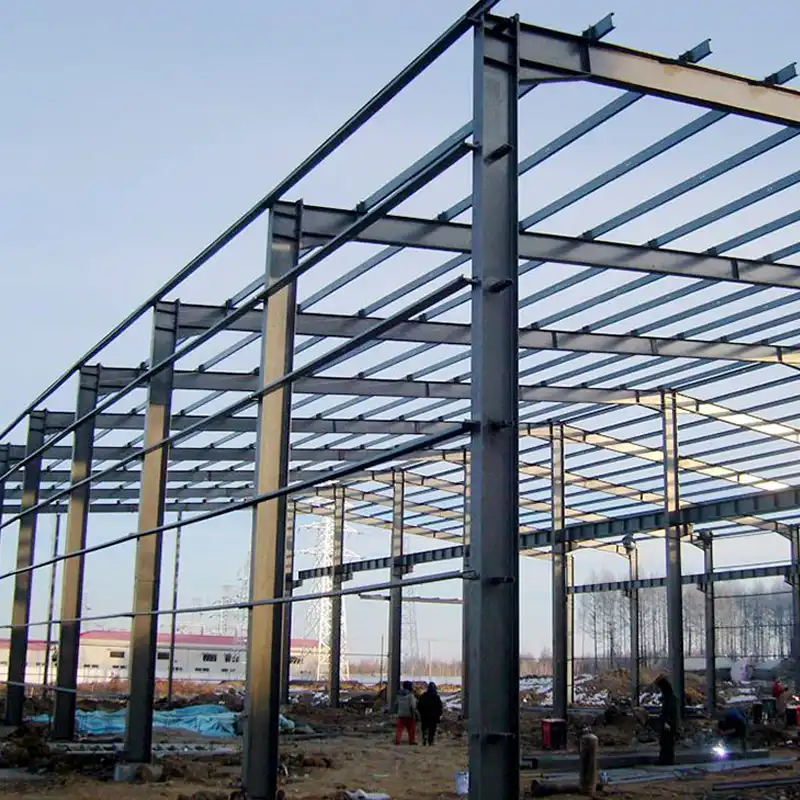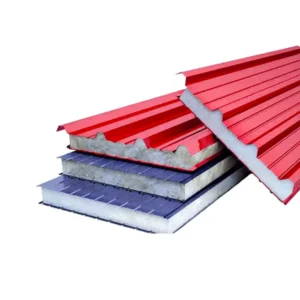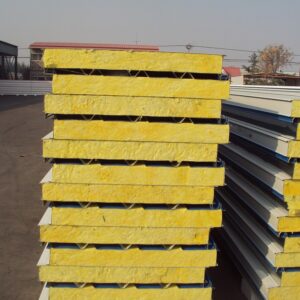Welcome to the ultimate guide on steel structures for 2023. If you’ve ever wondered about the significance of steel in construction, its various applications, and the advantages it offers, you’ve come to the right place.
In this detailed article, we will explore the world of steel structures, providing you with insights based on first-hand knowledge and credible sources.
Let’s dive into the world of steel structure.
What Is A Steel Structure?
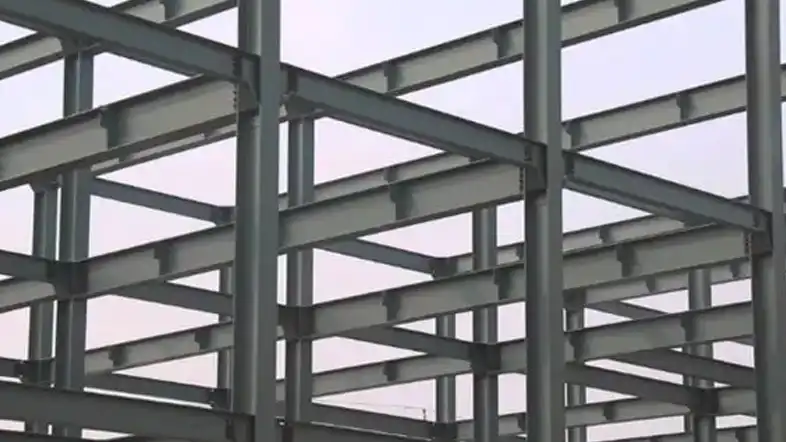
A steel structure refers to a construction framework or system primarily composed of steel components. This versatile and robust building method has gained widespread popularity due to its exceptional strength, durability, and adaptability to various architectural designs and applications.
Steel structures utilize steel as the primary building material, offering a range of advantages for construction projects. These advantages include high strength-to-weight ratio, quick and efficient construction, low maintenance costs, and sustainability. Steel’s ability to withstand heavy loads and harsh environmental conditions makes it an ideal choice for a wide array of structures, from towering skyscrapers and bridges to residential homes and industrial facilities.
The use of steel structures isn’t limited to any specific industry; they find applications in various sectors, including commercial and residential buildings, infrastructure, manufacturing, agriculture, and warehousing. The ability to create complex and innovative designs, coupled with the eco-friendly nature of steel, further enhances its appeal in modern construction.
A steel structure is a construction system crafted from interconnected structural steel components, designed to bear loads and ensure stability. These structures are known for their exceptional strength, offering reliability while consuming fewer raw materials compared to alternatives like concrete.
The Power of Steel Structures
Steel structures have revolutionized the construction industry. The exceptional strength, durability, and versatility of steel make it a top choice for builders and engineers worldwide. Here, we’ll delve into the key features of steel structures that set them apart.
Steel’s Remarkable Strength
Steel boasts an incredible strength-to-weight ratio, making it the ideal choice for constructing tall buildings, bridges, and other large structures. Its ability to withstand heavy loads and extreme conditions is unmatched.
Durability Beyond Compare
Steel structures are built to last. The material’s resistance to corrosion and decay ensures that your construction project will stand the test of time, even in the harshest environments.
Versatility in Design
Steel’s flexibility allows for innovative and complex architectural designs. Whether you’re envisioning a sleek, modern skyscraper or an intricate bridge, steel structures can bring your ideas to life.
Sustainability and Eco-Friendliness
Steel is a recyclable material, reducing the environmental impact of construction projects. Its long lifespan and energy-efficient properties make it an eco-friendly choice.
Main Steel Structure Types

There are several main types of steel structures commonly used in construction:
- Commercial Steel Buildings: These structures are frequently used for offices, retail spaces, and warehouses. They provide cost-effective and durable solutions for businesses.
- Residential Steel Homes: Steel-framed homes are becoming increasingly popular due to their resistance to fire, pests, and extreme weather. They offer a customizable and secure living environment.
- Steel Bridges: Steel is the primary material for constructing bridges due to its strength and durability. Steel bridges can span long distances, ensuring the efficient flow of traffic.
- Industrial Steel Structures: These structures house heavy machinery and equipment. They are designed to withstand the demands of industrial operations.
- Frame Structures (Beams and Columns): Frame structures consist of horizontal beams and vertical columns. These elements work together to support the load and provide stability. Frame structures are commonly used in buildings and industrial facilities.
- Grid Structures (Latticed Structures or Domes): Grid structures are characterized by a network of intersecting beams, forming a lattice-like pattern. Domes are a specific type of grid structure, often used in architectural marvels such as sports stadiums and exhibition centers.
- Prestressed Structures: Prestressed structures are designed to withstand tension and compression forces. Steel cables or tendons are tensioned before the application of external loads, ensuring that the structure remains stable and strong.
- Truss Structures (Bar or Truss Members): Truss structures consist of bar or truss members arranged in a triangular pattern. This design provides excellent strength-to-weight ratio and is commonly seen in roof systems, bridges, and transmission towers.
- Arch Structure: Arch structures have a curved, semi-circular shape, which allows them to distribute loads evenly. These structures are often used in the construction of tunnels and large open spaces.
- Arch Bridge: Arch bridges utilize a curved arch design to support the bridge deck. They are known for their aesthetic appeal and are frequently found in historic and modern bridge architecture.
- Beam Bridge: Beam bridges are straightforward structures with horizontal beams spanning between two supports. They are commonly used for short to moderate spans.
- Cable-Stayed Bridge: Cable-stayed bridges feature towers with cables attached directly to the bridge deck, creating a visually striking design. They are ideal for longer spans.
- Suspension Bridge: Suspension bridges are known for their iconic tower and cable design. These bridges can span great distances and are used in various applications, including pedestrian walkways and vehicle crossings.
- Truss Bridge (Truss Members): Truss bridges incorporate a truss framework, with multiple triangular elements, to distribute weight efficiently. They are used for road and railway crossings and can span significant distances.
These diverse types of steel structures showcase the adaptability and strength of steel in various construction projects, meeting the demands of different industries and architectural requirements.
Advantages of Steel Structure
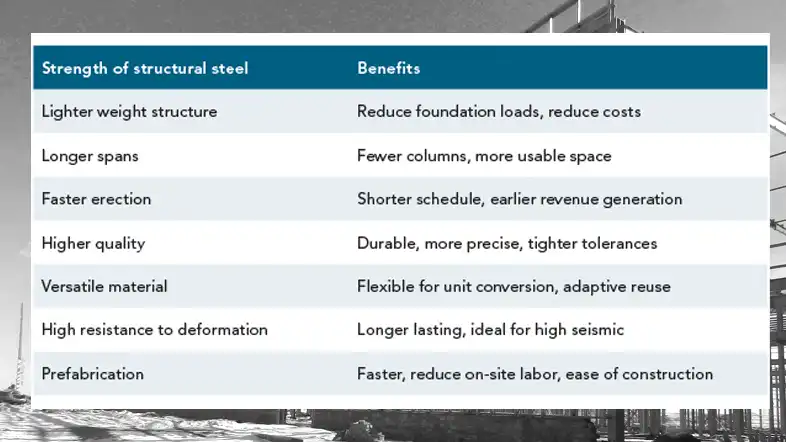
Steel structures offer a myriad of advantages, making them a preferred choice in the construction industry. Here are the key advantages of steel structures:
- Exceptional Strength: Steel is renowned for its remarkable strength. It possesses a high strength-to-weight ratio, which means it can withstand heavy loads without the need for excessive material, making it an ideal choice for constructing robust and durable buildings and infrastructure.
- Quick Construction: Steel structures can be pre-fabricated off-site and then assembled rapidly at the construction site. This significantly reduces construction time, leading to cost savings and less disruption in the surrounding area.
- Low Maintenance: Steel structures are low-maintenance. They are highly resistant to corrosion, pests, and decay, reducing the need for repairs and maintenance over time. This results in long-term cost savings for building owners.
- Sustainability: Steel is an eco-friendly construction material. It is recyclable, which means it can be repurposed in other projects, reducing waste and environmental impact. Additionally, steel structures can be designed to be energy-efficient, further enhancing their sustainability.
- Design Flexibility: Steel’s malleability and versatility allow for innovative and complex architectural designs. Whether you’re planning a contemporary skyscraper or a unique bridge, steel structures can bring your vision to life.
- Resilience to Natural Forces: Steel structures can withstand natural forces such as earthquakes, hurricanes, and extreme weather conditions. This makes them a safe and reliable choice, especially in areas prone to such disasters.
- Cost-Effective: Despite potentially higher initial costs, steel structures offer cost-effective solutions in the long run. Shorter construction times, reduced maintenance expenses, and durability contribute to overall cost savings.
- Adaptability: Steel structures are easily modified or expanded, making them adaptable to changing needs. Whether it’s adding new floors to a building or reconfiguring an industrial facility, steel structures can be adjusted accordingly.
- Fire Resistance: Steel is naturally fire-resistant, providing an added layer of safety in case of fire incidents. This feature is particularly valuable for commercial and industrial buildings.
- Reduced Foundation Costs: Due to the lighter weight of steel structures compared to concrete, they often require less extensive foundations. This translates to lower foundation costs, contributing to overall project affordability.
These advantages underline the versatility and reliability of steel structures in various construction applications, from residential homes to large-scale industrial projects. The inherent strength and adaptability of steel continue to drive its widespread use in the construction industry.
Application of Steel Structures
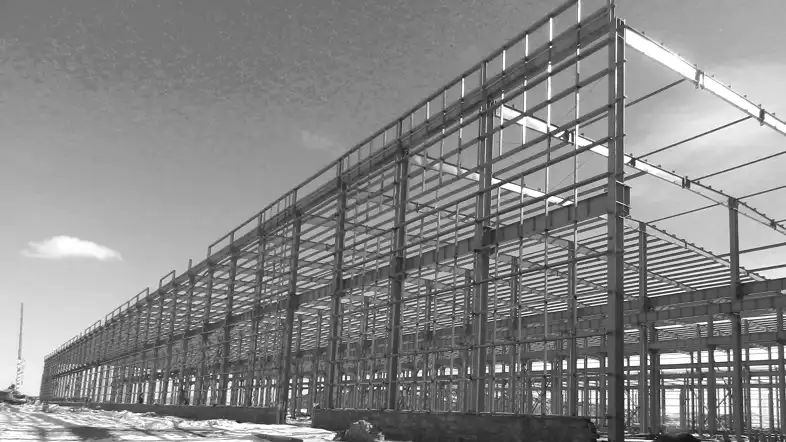
Steel structures find a wide range of applications across diverse industries and construction projects due to their exceptional strength, durability, and adaptability. Some notable applications include:
- Skyscrapers: The world’s tallest buildings, such as the Burj Khalifa and the Shanghai Tower, rely on steel structures for their structural integrity. Steel’s high strength-to-weight ratio allows for the construction of towering skyscrapers.
- Infrastructure: Bridges, tunnels, and airport terminals often use steel structures to ensure safety and durability. Steel’s resilience makes it an ideal choice for infrastructure projects, where the structures must withstand various environmental conditions and heavy traffic.
- Manufacturing Facilities: Steel structures provide the perfect environment for heavy manufacturing processes, offering safety and efficiency. Manufacturing facilities benefit from the open and unobstructed interior spaces steel structures provide.
- Residential Buildings: Steel-framed homes are gaining popularity due to their resistance to fire, pests, and extreme weather. Homeowners appreciate the security and durability that steel structures offer, making them a safe and reliable choice for residential construction.
- Agricultural Buildings: Barns and agricultural storage facilities often rely on steel structures for their longevity and functionality. Steel’s resistance to corrosion and pests ensures that agricultural structures can protect valuable assets for years.
- Warehouses: Commercial and industrial warehouses benefit from steel structures due to their cost-effectiveness and quick construction. These structures provide efficient storage spaces, allowing businesses to optimize their operations.
- Commercial Buildings: Offices, retail spaces, and other commercial buildings frequently use steel structures. The flexibility of steel allows for adaptable designs, meeting the unique needs of businesses.
- Sports Arenas: Stadiums and sports arenas utilize steel structures for their large, open spaces and the ability to support spectator seating. Steel’s strength and flexibility make it an excellent choice for such venues.
- Energy Facilities: Power plants and energy facilities rely on steel structures to house critical equipment and machinery. The durability of steel ensures that these structures can withstand the rigors of industrial operations.
- Educational Institutions: Many educational buildings, including schools and universities, use steel structures for their construction. Steel’s versatility allows for the creation of modern and functional educational spaces.
These applications represent just a fraction of the wide range of projects that benefit from the use of steel structures. Steel’s durability, adaptability, and cost-effectiveness have made it a fundamental element in the construction industry, shaping the world we live in today.
FAQs
Are steel structures more expensive than traditional construction materials?
Structural steel can be cost-competitive, especially in the long run due to its durability and low maintenance requirements. Initial costs may vary but are often balanced by reduced repair and replacement expenses.
How long does it take to construct a steel-framed building?
The construction time varies depending on the size and complexity of the project, but steel structures are generally quicker to erect than traditional buildings.
Are steel structures environmentally friendly?
Yes, steel is a highly sustainable material due to its recyclability and long lifespan, making it an eco-friendly choice.
What is the lifespan of a steel structure?
Steel structures can last for several decades or even centuries, depending on the maintenance and environmental factors.
Are steel-framed homes safe in areas prone to earthquakes or hurricanes?
Yes, steel-framed homes are highly resilient and can withstand extreme weather conditions, making them a safe choice in disaster-prone areas.
Can steel structures be designed to be visually appealing?
Absolutely! Steel’s versatility allows for a wide range of architectural designs, from sleek and modern to intricate and artistic.
Conclusion
In conclusion, steel structures are a game-changer in the construction industry. Their exceptional strength, durability, and versatility make them the top choice for a wide range of projects.
From towering skyscrapers to eco-friendly residential homes, steel structures continue to shape the future of construction. Make the smart choice and consider steel for your next building project.
Don’t forget to explore the diverse applications and advantages of steel structures. Get ready to embrace a construction revolution with steel!

